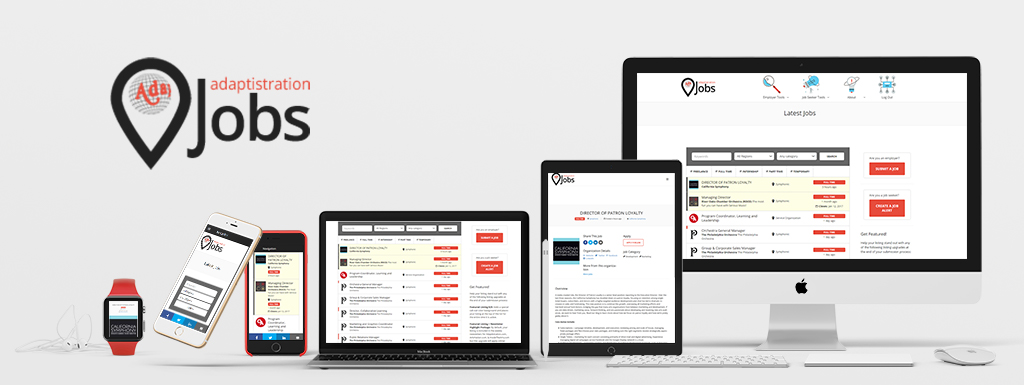That’s precisely what the Joffrey Ballet accomplished through a Groupon “deal of the day” offer in the Chicago area. Details are available in the 9/3/2010 edition of the Chicago Tribune in a blog post by Chris Jones but in a nutshell, Joffrey leveraged Groupon’s popularity (as a Chicagoland resident, I can say it’s great) but there are a few other items worth noting…

- The nearly 60 percent discount over the regular subscription price. It might lower overall revenue but who cares? It puts butts in the seats (assuming everyone shows up for concerts) and if a quarter of those individuals re-subscribe for the 2011/12 season, then it’s a win-win over not selling tickets. Hopefully, the group anticipated the revenue hit and used the opportunity to find a donor willing to pad the difference (an approach we’ve examined at length over the years). If not, the success and exposure makes it an excellent development pitch!
- In light of the fact that the subscriptions aren’t geared toward dumbed down programming, Joffrey has an excellent opportunity to conduct some market research, especially if enough of the Groupon buyers are newbiews.
- Social networking sales efforts do have potential. This has been an ongoing debate within the field for a few years now with each side presenting worthwhile points but the Joffrey example demonstrates the trick is plugging into something designed and executed properly, like Groupon, as opposed to similar efforts via Facebook ads, etc.
- I can almost hear critics saying that offering up deals through Groupon will only train ticket buyers to hold out for those deals, thereby lowering revenue development. That is certainly something to be concerned about but perhaps it is simply an indication that single tickets and subscriptions are indeed overpriced and we’re missing the bigger picture by maintaining artificially inflated ticket prices.
The Lyric Opera of Chicago enjoyed some success with Groupon last season and now the Joffrey Ballet enjoyed a turn. It will be interesting to see if a host of other Chicagoland arts groups jump on board and if so, will it flood the market and dilute everyone’s success or will they discover that there’s enough interest in (competitively priced) arts offerings to expand markets beyond previously suspected limits. My money is on the latter.



San Francisco Symphony has sold a huge number of tickets with their annual mid-season sale!
In Indianapolis we’ve had great success with three different Groupon promotions, two for single tickets and one for a 5k/10k we do in support of our annual fund. We’ve also found that the redemption rate is quite good.
I’m pretty sure St. Louis and Cincy have also done Groupon promotions.
Thanks Scott, it would be interesting to see exactly what sort of impact Groupon has had on orchestras the past few years.
San Antonio Symphony tried Groupon for two concerts so far and we sold lots of single tickets. (first try at the end of last season and just last week for our Oct. 2 opening concert.) Haven’t tried it for subscriptions yet and it is fascinating that the Ballet was so successful. I would have assumed this was better targeted at single sales. Most interesting fact — most were completely new folks that had never bought tickets before. Yes, the revenue is very low, but if they are almost all new, you can safely assume they would not have attended through your regular promotions.
Thanks for the numbers Jack. Even after writing about the lower revenue I was wondering about overall marketing performance related to new tix buyers and how the exact cost ratios are shaking out compared to traditional ad initiatives. If the numbers through Groupon are high enough, the actual revenue maybe higher.
Not sure I understand your question, but GROUPON cost us nothing. We offered single tickets at 50% off regular price. GROUPON paid for their e-blast. Then GROUPON gets half of the revenue. So, we earn 25% of regular price, but with no marketing costs. The only risk is if folks who would have purchased anyway, switch to GROUPON. On our two tries, that did not happen. Since the Churn rate on single ticket sales is so high, social media is quickly becoming the only affordable marketing tool. GROUPON is getting some new competitors in San Antonio, and we are going to try them in November.
That’s what I was getting at, thanks Jack. Even though the net revenue is 25%, it’s a fixed rate, regardless of sale numbers. Whereas using traditional marketing methods to attract new tix buyers can have much lower returns unless it generates higher numbers of sales.
I’m particularly interested in learning how the Groupon competitors work out.
I haven’t heard about the results, yet, but American Theater Company offered subscriptions on Groupon last week. http://www.groupon.com/chicago/deals/american-theater-company
I actually am concerned that there will be a bandwagon effect, which will continue the unfortunate trend of training arts consumers to wait for discounts.
The bandwagon effect in the sense you described is something to be concerned about but as I mentioned above, it may simply be the latest indication that average ticket prices need to come down.
In my (admittedly limited) experience, there is a prevalent belief that a 50/50 earned to contributed revenue ratio is sustainable for the performing arts, and if you push for a higher share of contributions, you are walking on the edge of sustainability. This belief may or may not be correct.
But if it IS correct, AND prices also need to come down, then costs will also have to come down. That means artist salaries and administrative infrastructure (read: salaries).
There are some creative experiments ongoing with other revenue streams (e.g. online media, opera in-theater broadcast, licensed content). But so far, it appears that these revenue streams can deliver only a trickle of cash. And though it is early to tell how successful these will be, it would be arrogant (or just overly optimistic) for the performing arts to think we can “make it” online, where the prevailing price is free.
So, we can hope that a greater share of revenue from contributions is OK and sustainable, or we have to scale in ways that people are willing to pay for (but how many Hollywood Bowls and Tanglewoods can be supported?). Or we have to do what the for-profit world does: continue to cut costs in deep ways. This may include our own incomes.
We’ve covered a number of different revenue/expense scenarios before and how lost revenue from lowered ticket sales can be replaced (not to mention the positive dynamic impact of full houses etc.). Ultimately, looking at the equation as a fixed sum tends to prevent creative solutions. Granted, it isn’t an easy solution but I believe it is a process that each ensemble will refine as time progresses.
We did a Groupon in Utah last spring and had great success – at the time it was the 2nd most popular Groupon ever in our area. We kept close track of those who bought and most were brand new to the database and a few ended up converting into subscribers later on. A good number have already become repeat ticket buyers.
Thanks for sharing Jon, this is precisely the sort of thing that is helpful to know about. Moreover, knowing precisely how many of those Groupon ticket buyers purchased subscriptions and are now reoccurring single tix buyers (which I consider to be the emerging subscription model) will help the institution calculate the initiative’s real value as it applies to marketing performance.